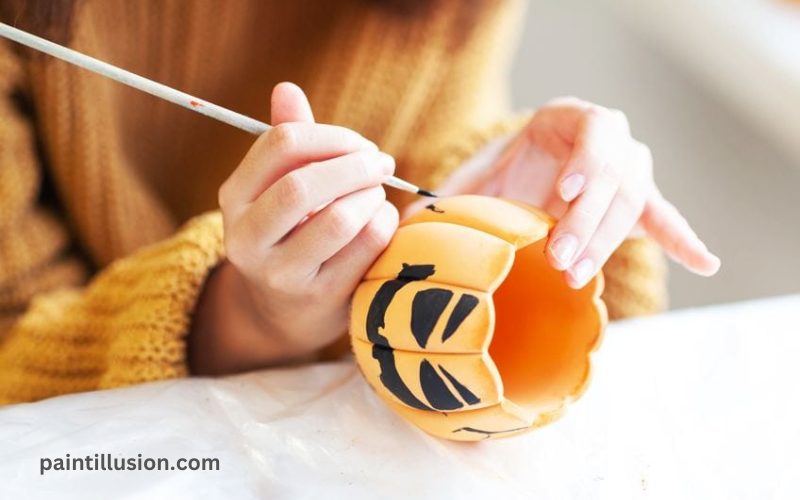Acrylic paint is a versatile medium that is loved by artists and hobbyists alike. Its ability to adhere to a variety of surfaces makes it a popular choice for creative projects. However, when it comes to painting plastic, there are some factors to consider to ensure a successful and long-lasting result. In this article, we will explore whether acrylic paint will stick to plastic and provide you with tips and techniques for achieving the best results.
Understanding different types of plastic
Not all plastics are created equal, and different types of plastic surfaces may require different approaches when it comes to painting. Some plastics have a smooth surface, while others may be textured or have a glossy finish. It’s important to identify the type of plastic you are working with to determine the best method for painting.
Polyethylene (PE) and polypropylene (PP) plastics, commonly used in food containers and household products, have a low surface energy, making them more challenging to paint. However, there are specialized paints and primers available that are designed to adhere to these types of plastic surfaces.
On the other hand, polystyrene (PS) and polyvinyl chloride (PVC) plastics have a higher surface energy and are generally easier to paint. These types of plastics are commonly used in craft materials, packaging, and household items.

Factors to consider when using acrylic paint on plastic
Before diving into your plastic painting project, it’s important to consider a few key factors that can affect the adhesion and longevity of the paint.
1. Surface preparation: Properly preparing the plastic surface is crucial for ensuring good adhesion. Cleaning the surface with soap and water to remove any dirt, grease, or oils is the first step. You can also use rubbing alcohol or a plastic cleaner specifically designed for painting preparation.
2. Paint quality: Choosing a high-quality acrylic paint formulated for use on plastic surfaces will greatly improve the chances of successful adhesion. Look for paints that are labeled as “plastic-friendly” or “multi-surface” to ensure compatibility.
3. Application technique: The way you apply the paint can also affect its adhesion. Using thin, even coats is recommended. Avoid applying the paint too thickly, as this can lead to cracking or peeling.
Preparing the plastic surface for painting
To ensure that acrylic paint adheres well to plastic, proper surface preparation is essential. Follow these steps to prepare the plastic surface before painting:
1. Clean the surface: Thoroughly clean the plastic surface using soap and water. This will remove any dirt, dust, or oils that may prevent the paint from adhering properly. Rinse the surface with clean water and allow it to dry completely.
2. Sand the surface (if necessary): If the plastic surface is smooth and glossy, it may benefit from being lightly sanded. Use a fine-grit sandpaper or sanding block to create a slightly rough texture. This will provide a better surface for the paint to grip onto.
3. Apply a primer (if needed): Depending on the type of plastic you are working with, applying a primer may be necessary. Primers designed specifically for plastic surfaces can improve adhesion and durability. Follow the manufacturer’s instructions for proper application and drying times.
Techniques for applying acrylic paint on plastic
Now that you have prepared the plastic surface, it’s time to apply the acrylic paint. Here are some techniques that can help you achieve the best results:
1. Brush painting: Brush painting is the most common technique for applying acrylic paint on plastic. Use a high-quality synthetic brush that is suitable for acrylic paints. Apply thin, even coats of paint, allowing each coat to dry before applying the next.
2. Spray painting: Spray painting can provide a smooth and even finish on plastic surfaces. Use acrylic spray paint designed for plastic and follow the manufacturer’s instructions for proper application. Make sure to work in a well-ventilated area and protect surrounding surfaces from overspray.
3. Sponging or stippling: For textured plastic surfaces or achieving unique effects, you can try sponging or stippling techniques. Dabbing a sponge or stippling brush in the paint and lightly pressing it onto the surface can create interesting textures or patterns.

Tips for achieving better adhesion and longevity
To ensure that your acrylic paint adheres well to plastic and lasts for a long time, here are some additional tips to keep in mind:
1. Use light-colored paint: Light-colored acrylic paints tend to have better adhesion to plastic than dark-colored paints. If you want to use a dark color, consider applying a light-colored base coat first.
2. Allow proper drying time: Acrylic paint dries quickly, but it’s important to allow each coat to dry completely before applying the next. This will prevent the paint from cracking or peeling.
3. Avoid excessive handling: Once the paint has dried, avoid excessive handling of the painted plastic surface. This will help preserve the adhesion and longevity of the paint.
Common mistakes to avoid when painting plastic with acrylic
While painting plastic with acrylic can be a rewarding and enjoyable experience, there are some common mistakes that you should avoid to ensure the best results:
1. Skipping surface preparation: Neglecting to properly clean and prepare the plastic surface can lead to poor adhesion and paint failure. Take the time to clean and sand the surface if necessary.
2. Using the wrong type of paint: Not all acrylic paints are suitable for painting plastic surfaces. Using the wrong type of paint can result in poor adhesion or paint that easily chips or flakes off. Choose paints specifically formulated for plastic or multi-surface use.
3. Applying too thickly: Applying acrylic paint too thickly can lead to cracking or peeling as the paint dries. Remember to apply thin, even coats and allow each coat to dry before applying the next.
Exploring additional sealants or primers for added durability
If you want to enhance the durability of your acrylic paint on plastic, you can consider using additional sealants or primers. These products can provide an extra layer of protection and help prevent the paint from chipping or fading over time.
1. Clear acrylic sealer: Applying a clear acrylic sealer over the painted plastic surface can help protect the paint from scratches and UV damage. Choose a sealer that is compatible with acrylic paints and follow the manufacturer’s instructions for application.
2. Plastic adhesion promoter: If you are working with particularly challenging plastics, such as polyethylene or polypropylene, using a plastic adhesion promoter can improve the adhesion of the paint. These products help create a bond between the paint and the plastic surface.
Examples of successful acrylic paint projects on plastic
To inspire your own acrylic paint projects on plastic, here are some examples of successful endeavors:
1. Painting plastic flower pots: Transform plain plastic flower pots into vibrant and personalized planters by painting them with acrylic paint. Experiment with different colors and techniques to create unique designs.
2. Upcycling plastic furniture: Give old plastic furniture a new lease on life by painting it with acrylic paint. Whether it’s a chair, table, or storage unit, a fresh coat of paint can completely transform the look and feel of these items.
3. Customizing plastic toys: Add a personal touch to plastic toys by painting them with acrylics. This can be a fun activity to do with children, allowing them to express their creativity and make their toys one-of-a-kind.
Conclusion
In conclusion, acrylic paint can stick to plastic surfaces if the proper techniques and preparations are followed. Understanding the type of plastic you are working with, properly preparing the surface, and using high-quality acrylic paint will greatly improve the adhesion and longevity of the paint. By avoiding common mistakes and exploring additional sealants or primers, you can achieve beautiful and long-lasting results on your plastic painting projects. So go ahead, unleash your creativity, and enjoy the world of acrylic paint on plastic!

